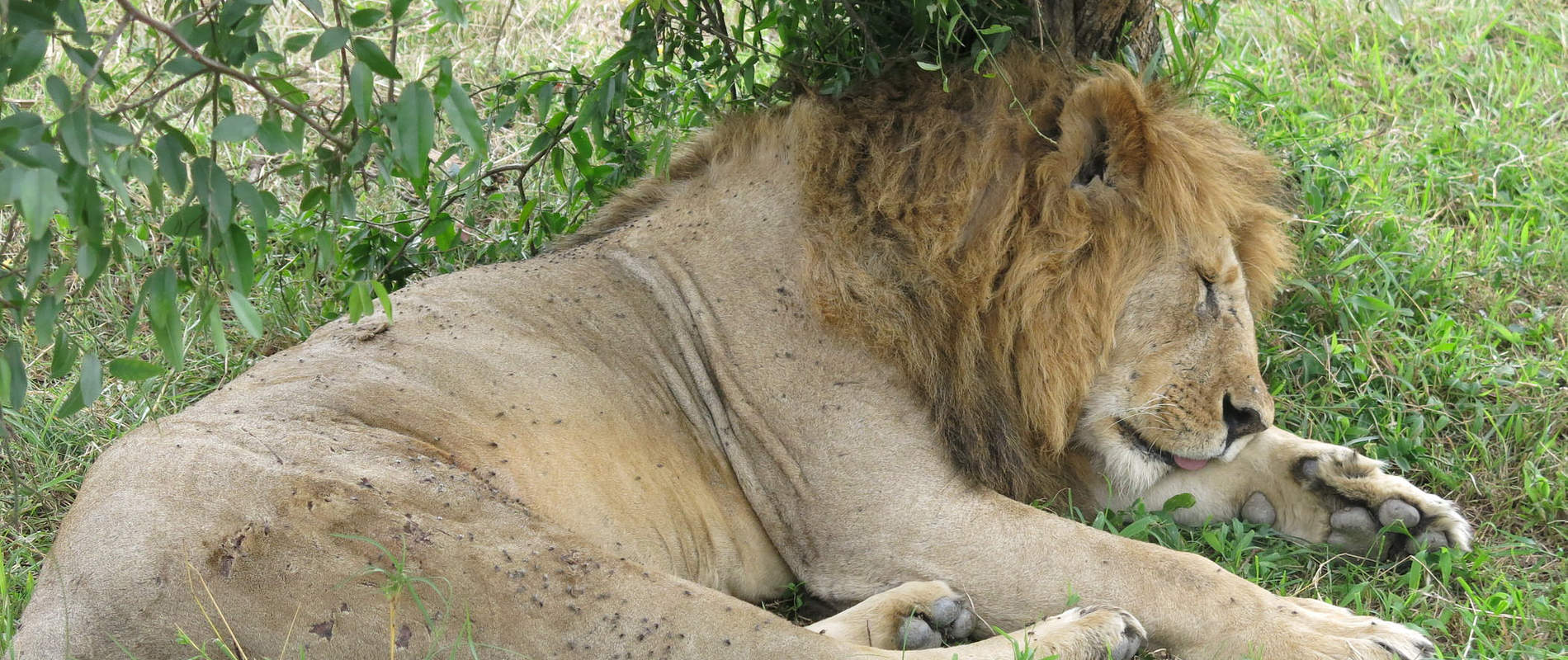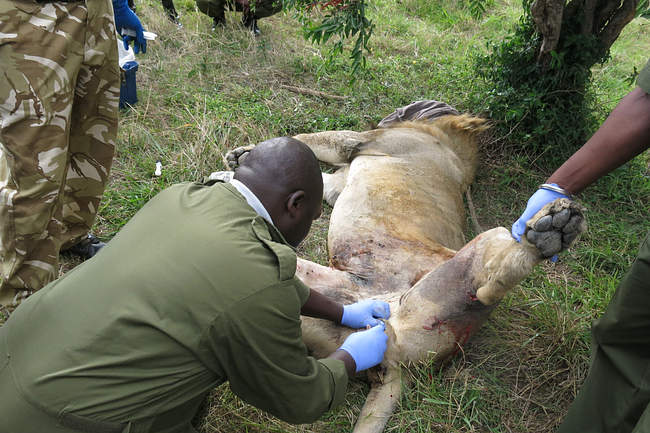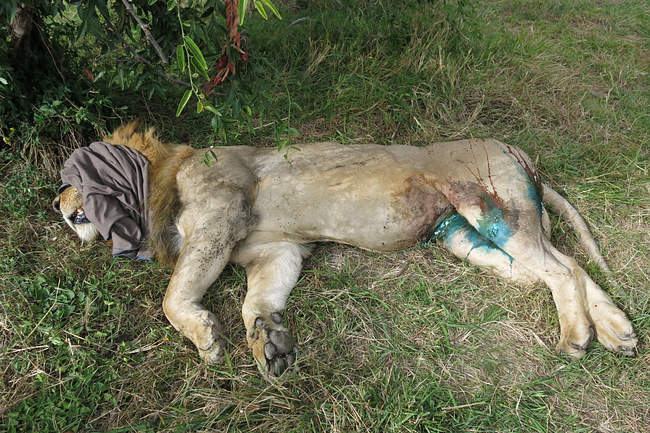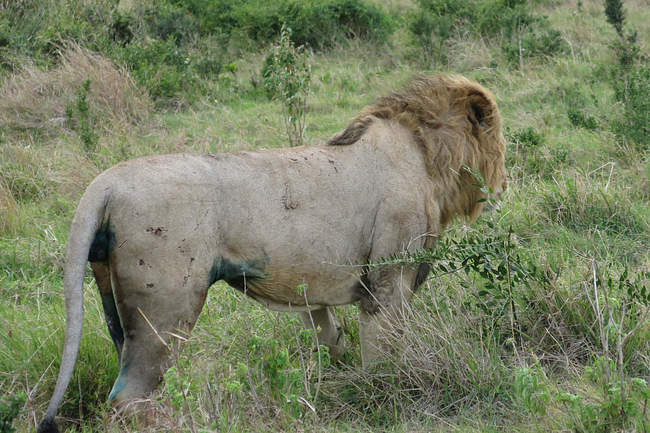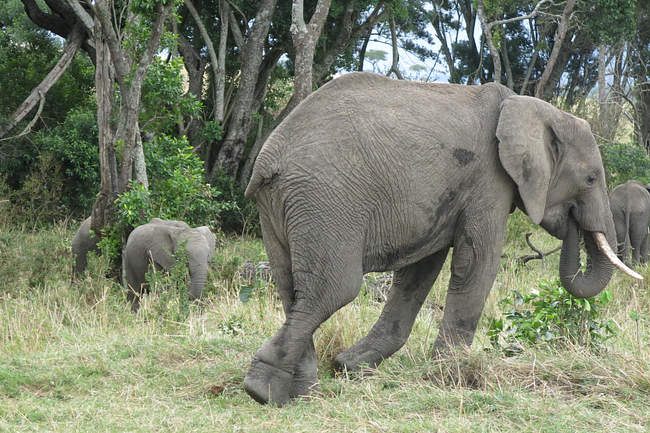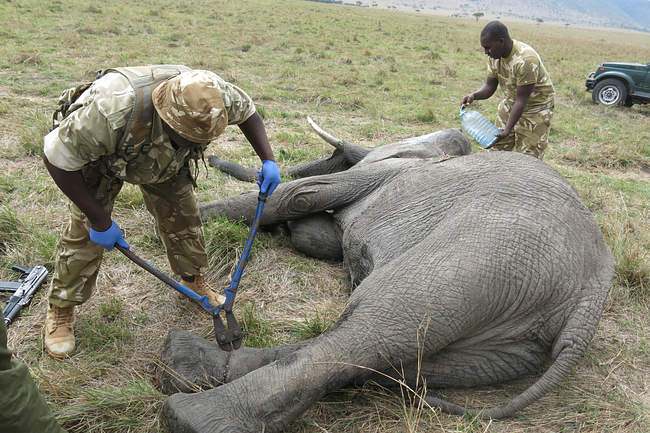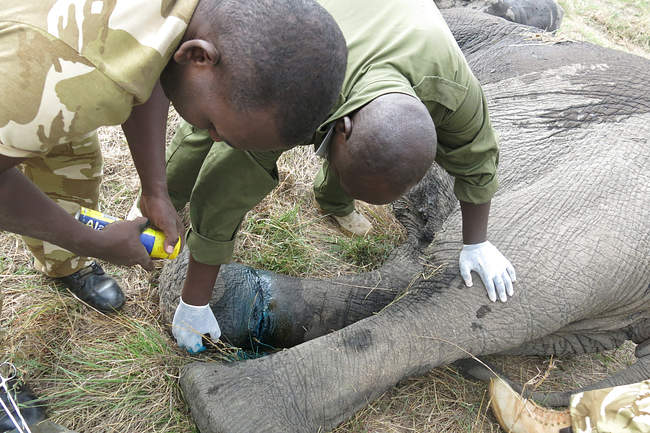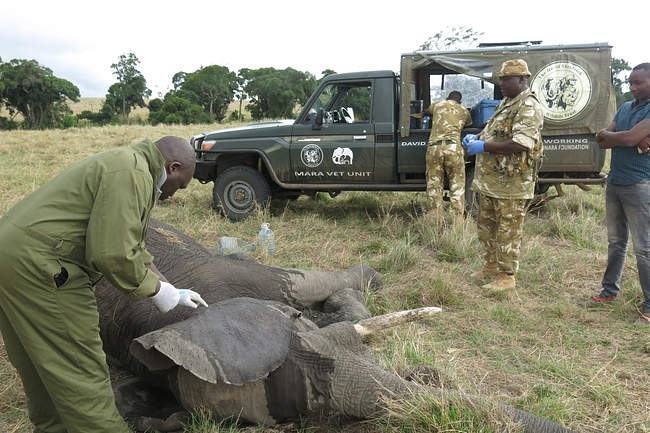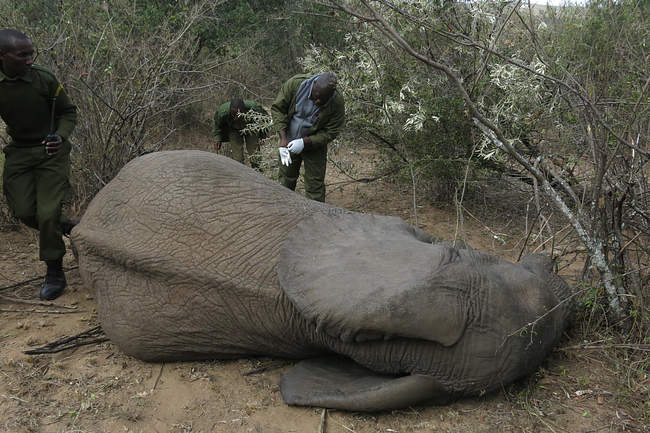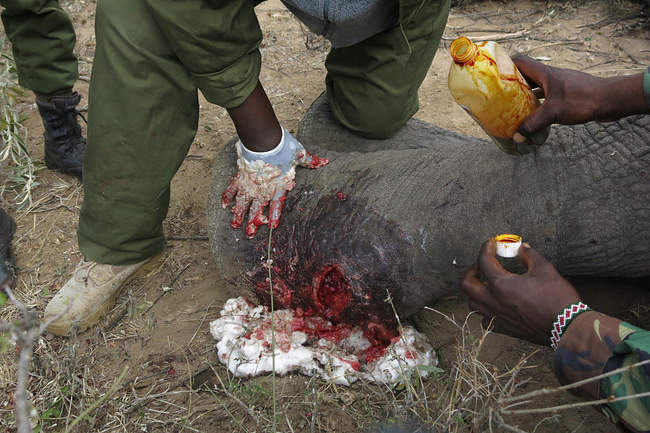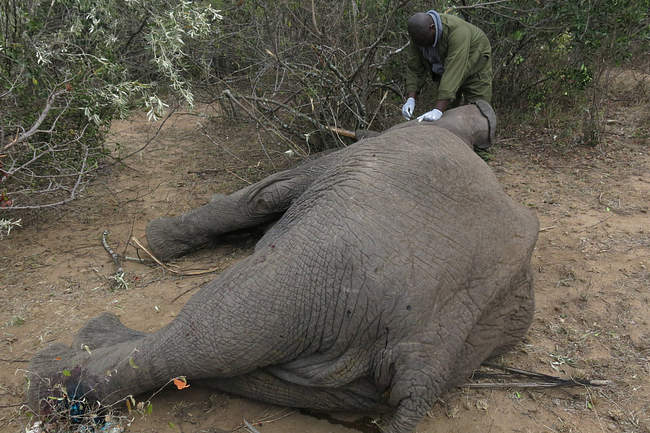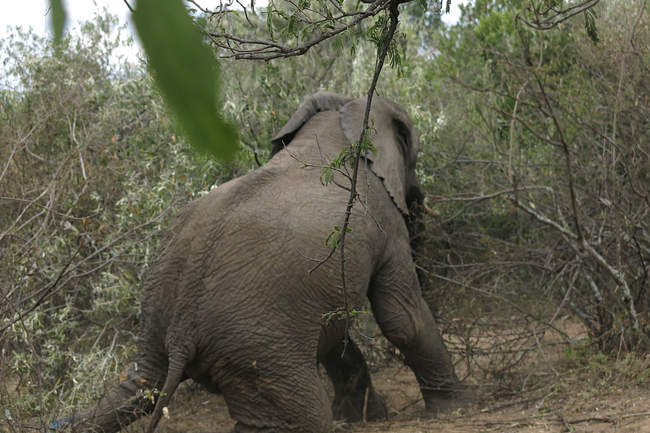The month was characterised by the sudden onset of rains after a short dry spell. The Team dealt with five case this month, four of which had a fair to good prognosis and one of which was the post-mortem of a buffalo.
Introduction
The deaths of several wildlife species witnessed in some parts of the conservation area, particularly rhinos, has subsided with the results from samples collected to determine their cause of deaths still being awaited.
Cases handled during the period were as follow:
CASE#1 SNARED ZEBRAS
Date: 1st December 2018
Species: Common Zebra
Sex: Both females
Age: Adults
Location: Kawaii area
History: The two zebras harbouring snares were reported to the unit by the Mara Triangle Conservancy patrol rangers who got the information from community scouts bordering the conservancy. Both were females in the same herd that grazes near the community area outside the Conservancy. One had a tight snare round her neck while the other had one over her neck and behind her left shoulder. They were clearly disturbed by the snares.
Immobilization, examination and treatment: Given that both were of the same size, same dosage of drug combinations were used for immobilization which was done in turns. They were immobilized with a combination of 5mgs Etorphine Hydrochloride and 50mgs Azaperone in a 1.5mls Daninject dart. Darting was done from a vehicle and they took an average of four minutes to get fully immobilized.
The first one to be immobilized had a snare round her neck entangling her left shoulder. She had a braided wire that had caused injuries on her shoulder. The snare was removed with the resultant wound being debrided with the help of Hydrogen Peroxide and gauze swabs. It was rinsed with clean water and disinfected with Tincture of Iodine. Topical Oxytetracycline wound spray was then applied.
Other treatments given include 3000mgs Amoxicillin antibiotic and 1000mgs Flunixin Meglumine anti-inflammatory all given intramuscularly.
The second zebra to be immobilized had a plain wire round her neck and she appeared gravid. Though the snare was tight on her neck, no injury was detected upon removal.
Reversal and prognosis: Both of them were reversed with 24mgs diprenorphine hydrochloride after being worked on.
The first zebra had her anaesthesia reversed soon after treatment and she went ahead to join her herd. Her prognosis was considered good.
The second female zebra anaesthesia was also reversed after the snare was removed and she also joined her herd with good prognosis.

CASE#2 INJURED LION
Date: 6th December 2018
Species: African lion
Sex: Male
Age: Adult
Location: Mara Triangle Conservancy
History: This big male was seen with injuries by Mara Triangle Conservancy rangers. He could hardly move and appeared to be in deep pain. They called the Mobile Veterinary Unit for assessment. He was found lying down in a Lugga but soon struggled to get out eventually settling under a tree for shade. He had sustained injuries thought to have been occasioned from territorial fights with other males.
Immobilization, examination and treatment: Restraint was achieved using a combination of 6mgs Medetomidine Hydrochloride and 250mgs Ketamine Hydrochloride delivered through a 3ml Daninject dart. Darting was done from a vehicle with the lion become fully anaesthetised after eleven minutes. Examination revealed multiple fight wounds, about three days old, on most parts of his body. More serious wounds could be observed on his thighs which were probed and debrided with Hydrogen Peroxide and swabs. Tincture of Iodine was used as a disinfectant and Cloxacillin ointment antibiotic infused. Other treatments given include 3000mgs Amoxicillin antibiotics and 16mgs Dexamethasone Sodium anti-inflammatories, which were all given intramuscularly.
Reversal and prognosis
Reversal was achieved Yohimbine given intravenously through saphenous vein. He woke up after eight minutes, moved slightly and relaxed under another shade. Prognosis for full recovery is good.
CASE#3 POST-MORTEM OF A BUFFALO
Date: 6th December 2018
Species: Cape buffalo
Sex: Male
Age: Adult
Location: Little Governor’s area
History: This buffalo carcass was seen the morning of this date close to Little Governor’s Camp in the Mara Triangle Conservancy. The Conservancy Management called the Mobile Veterinary Unit to establish his cause of death.
General observation:
He was found on sternal recumbency, partly scavenged on. There were signs of slight struggle at the scene before death. Closer examination revealed this buffalo was old having lost most of his incisor teeth from wear and tear. His body condition appeared poor with notable generalized alopecia.
On opening the carcass, the following was noted:
· There was generalized parlour of all his mucosae
· The heart had several cysts but appeared normal
· The lungs appeared frothy and haemorrhagic. The froth discharge extended to trachea.
· The kidneys appeared normal.
· Liver had a cooked appearance with an enlarged gall bladder.
· The rumen and reticulum was full with unusually dry contents, mostly dry grass. There was a sign of ruminal impaction.
· The omasum with its contents appeared excessively dry.
· The contents in the abomasum were scanty with with both large and small intestines having little ingesta.
· No other anomaly was detected grossly.
Conclusion
This was an old buffalo as evidenced by highly worn teeth. He could not graze but pick dry and loose grass.
This could have led to ruminal impaction and prolonged recumbency leading to hypostatic pneumonia. He succumbed to these complications.

Our mobile vet initiative is in the field every day saving wild lives
CASE#4 SNARED ELEPHANT
Date: 8th December 2018
Species: African elephant
Sex: Male
Age: Approximately 15 years
Location: Mara Triangle Conservancy
History: This elephant was spotted in a big herd within the Mara Triangle Conservancy and was seen with a tight snare round his right hind leg by Conservancy rangers on patrol. They called the Mobile Veterinary Unit for help.
Immobilization, snare removal and treatment: He was immobilized with 15mgs Etorphine Hydrochloride delivered through a1.5ml Daninject dart.Darting was done from a vehicle with this elephant becoming fully immobilized after 8 minutes. After stabilizing this elephant, examination was conducted revealing a tight snare round his right hind leg at the ankle. This had caused some tissue damage with mild infection.
The wound was cleaned with the help of gauze swab and Hydrogen Peroxide. It was rinsed with clean water before Tincture of Iodine was used for disinfection. Finally green clay and Oxytetracycline spray was applied. Additional treatments include parenteral administration of 15000mgs Amoxicillin antibiotics and 5000mgs Flunixin Meglumine anti-inflammatory.
Reversal and prognosis: Reversal was achieved by use of 42mgs Diprenorphine Hydrochloride given intravenously through a prominent ear vein. He woke up after three minutes to join the rest of the herd. Prognosis for full recovery is good.

CASE#5 INJURED ELEPHANT
Date: 9th December 2018
Species: African elephant
Sex: Female
Age: Adult
Location: Siana Conservancy
History: This elephant was seen by the Mobile Veterinary Unit team with the Mara Elephant teams when scanning a herd for a reported injured elephant. She had a wound on her left rear limb at the ankle joint.
Immobilization, examination and treatment: Immobilization was achieved by use of 15mgs Etorphine Hydrochloride delivered through a 1.5ml Daninject dart. Because of terrain, darting was done from the air. It took ten minutes for the drugs to take full effect with this elephant assuming sternal recumbency. She was made to lie on her right lateral side before examination could be conducted.
Her left rear limb had a wound most likely caused by an arrow which had since fallen. The wound appeared septic and was debrided with the help of Hydrogen Peroxide. Clean water was used for rinsing before being disinfected with Tincture of Iodine. Green clay and Oxytetracycline spray was finally applied. Other treatments given include parenteral administration of Amoxicillin antibiotics and Flunixin Meglumine anti-inflammatories.
Reversal and prognosis: Reversal was done by administration of 42mgs Diprenorphine Hydrochloride through a prominent ear vein. Prognosis for full recovery is good.
Conclusion
Report by Dr. Campaign Limo. The Mobile Veterinary Unit would like to extend its gratitude to all stakeholders who helped in reporting and monitoring animals that required assistance. We thank Minara Foundation through the DSWT for their continuous facilitation to the Unit. Thanks too to KWS Management for their technical support and guidance. Without all your support, it would have been difficult for the unit to realise its achievements.
